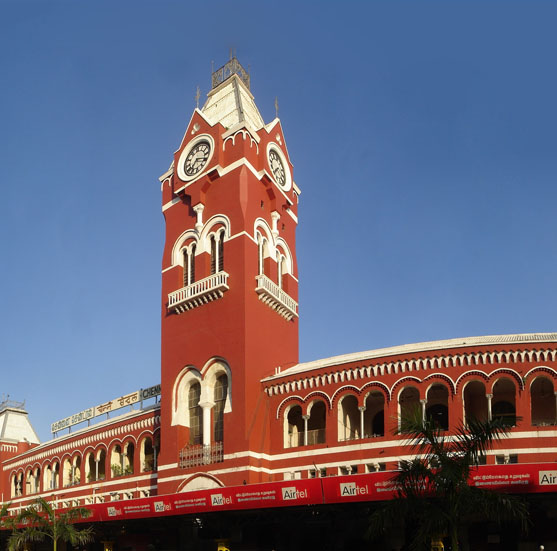Read Our Seven Tips for Post-Stroke Recovery for a Successful Recovery at Home
Follow The Advice Of Experts.
Even after you transition home, it is critical to maintain regular appointments with your doctors, especially your neurologist. Typically, post-stroke patients visit their neurologist at least once every six weeks early in the recovery. However, over half of stroke survivors fail to comply with recommended follow-up visits and do not see any specialists during their recovery.
Adapt Your Home To Your Needs.
Depending on the severity of your stroke, you may require medical equipment such as a walker, a wheelchair or a hospital bed in the home. In addition, your home may be require safety modifications before you can feel comfortable. Your doctors, therapists and discharge planners should be able to advise you on the equipment you will need at home.
Follow Up On Your Blood Work.
Because strokes are caused by a reduction in blood flow to the brain, your physician will usually prescribe anticoagulants to facilitate your recovery. The dosage is adjusted based on your blood flow, so regular blood testing is critical to ensuring a safe and accurate dosage. Your doctors will advise you on the proper procedure and timing for your blood work.
Understand Your Limitations.
We all value our independence and many of us are accustomed to an active lifestyle. However, anyone recovering from a stroke must understand that the recovery process cannot be rushed. Your brain is gradually rebuilding damaged synapses, which can cause mental fogginess or a sense of mild confusion. Your body is recovering as well and activities that were once routine, such as walking or hand movement, may present new physical challenges. Understand that you can take steps to address them. Receiving support from a caregiver or a loved one can help with your physical needs and memory exercises such as keeping an activity notebook can improve cognitive function.
Do As Much As You Can.
Though you should never endanger yourself or risk your recovery by doing too much too soon, it is important that you attempt basic tasks with which you feel comfortable. Your efforts will facilitate your physical recovery and small accomplishments can provide a big mental boost and propel you toward your long-term goals. Take incremental steps and utilize support from family or caregivers for daily activities that pose a challenge.
Maintain Your Therapy Schedule.
Though your therapy needs (physical, occupational or speech) may vary, it is important to start therapy as soon as possible and remain consistent with your appointments and recommended exercises. Though your initial therapy sessions may be trying, maintain focus on your long-term goals. Your therapists are trained professionals who have helped numerous post-stroke patients and can act as expert guides in the critical weeks following a stroke.
Watch Your Diet.
It is important to limit your intake of fat, cholesterol and sodium to prevent unnecessary stress on your body. It may be tempting to indulge in comfort foods, but a balanced diet is essential to a healthy recovery. It is also important to maintain a regular meal schedule, even though you may not be hungry. Proper nutrition and caloric intake give your body the energy it needs to heal.
SYMPTOMS
Watch for these signs and symptoms if you think you or someone else may be having a stroke. Pay attention to when the signs and symptoms begin. The length of time they have been present can affect your treatment options:
Trouble With Speaking And Understanding. You may experience confusion. You may slur your words or have difficulty understanding speech.
Paralysis Or Numbness Of The Face, Arm Or Leg. You may develop sudden numbness, weakness or paralysis in your face, arm or leg. This often happens just on one side of your body. Try to raise both your arms over your head at the same time. If one arm begins to fall, you may be having a stroke. Also, one side of your mouth may droop when you try to smile.
Trouble With Seeing In One Or Both Eyes. You may suddenly have blurred or blackened vision in one or both eyes, or you may see double.
Headache. A sudden, severe headache, which may be accompanied by vomiting, dizziness or altered consciousness, may indicate you're having a stroke.
Trouble With Walking. You may stumble or experience sudden dizziness, loss of balance or loss of coordination.
WHEN TO SEE A DOCTOR
SEEK IMMEDIATE MEDICAL ATTENTION if you notice any signs or symptoms of a stroke, even if they seem to fluctuate or disappear. Think "FAST" and do the following:
Face. Ask the person to smile. Does one side of the face droop?
Arms. Ask the person to raise both arms. Does one arm drift downward? Or is one arm unable to rise up?
Time. If you observe any of these signs, call 108 immediately.
CAUSES
A stroke may be caused by a blocked artery (ischemic stroke) or the leaking or bursting of a blood vessel (hemorrhagic stroke). Some people may experience only a temporary disruption of blood flow to the brain (transient ischemic attack, or TIA) that doesn't cause permanent damage
RISK FACTORS
Many factors can increase your stroke risk. Some factors can also increase your chances of having a heart attack. Potentially treatable stroke risk factors include:
Lifestyle risk factors
- Being overweight or obese
- Physical inactivity
- Heavy or binge drinking
- Use of illicit drugs such as cocaine and methamphetamines
MEDICAL RISK FACTORS
- Blood pressure readings higher than 120/80 millimeters of mercury (mm Hg)
- Cigarette smoking or exposure to secondhand smoke
- High cholesterol
- Diabetes
- Obstructive sleep apnea
- Cardiovascular disease, including heart failure, heart defects, heart infection or abnormal heart rhythm
- Personal or family history of stroke, heart attack or transient ischemic attack.
COMPLICATIONS
A stroke can sometimes cause temporary or permanent disabilities, depending on how long the brain lacks blood flow and which part was affected. Complications may include:
Paralysis Or Loss Of Muscle Movement. You may become paralyzed on one side of your body, or lose control of certain muscles, such as those on one side of your face or one arm. Physical therapy may help you return to activities affected by paralysis, such as walking, eating and dressing.
Difficulty Talking Or Swallowing. A stroke might affect control of the muscles in your mouth and throat, making it difficult for you to talk clearly (dysarthria), swallow (dysphagia) or eat. You also may have difficulty with language (aphasia), including speaking or understanding speech, reading, or writing. Therapy with a speech-language pathologist might help.
Memory Loss Or Thinking Difficulties. Many people who have had strokes experience some memory loss. Others may have difficulty thinking, making judgments, reasoning and understanding concepts.
Emotional Problems. People who have had strokes may have more difficulty controlling their emotions, or they may develop depression.
Pain. Pain, numbness or other strange sensations may occur in the parts of the body affected by stroke. For example, if a stroke causes you to lose feeling in your left arm, you may develop an uncomfortable tingling sensation in that arm. People also may be sensitive to temperature changes, especially extreme cold, after a stroke. This complication is known as central stroke pain or central pain syndrome. This condition generally develops several weeks after a stroke, and it may improve over time. But because the pain is caused by a problem in your brain, rather than a physical injury, there are few treatments.
Changes In Behavior And Self-Care Ability. People who have had strokes may become more withdrawn and less social or more impulsive. They may need help with grooming and daily chores.
PREVENTION
Knowing your stroke risk factors, following your doctor's recommendations and adopting a healthy lifestyle are the best steps you can take to prevent a stroke. If you've had a stroke or a transient ischemic attack (TIA), these measures might help prevent another stroke. The follow-up care you receive in the hospital and afterward also may play a role as well.
Many stroke prevention strategies are the same as strategies to prevent heart disease. In general, healthy lifestyle recommendations include:
Controlling High Blood Pressure (Hypertension). This is one of the most important things you can do to reduce your stroke risk. If you've had a stroke, lowering your blood pressure can help prevent a subsequent TIA or stroke.
Exercising, managing stress, maintaining a healthy weight and limiting the amount of sodium and alcohol you eat and drink can all help to keep high blood pressure in check. In addition to recommending lifestyle changes, your doctor may prescribe medications to treat high blood pressure.
Lowering The Amount Of Cholesterol And Saturated Fat In Your Diet. Eating less cholesterol and fat, especially saturated fat and trans fats, may reduce the plaque in your arteries. If you can't control your cholesterol through dietary changes alone, your doctor may prescribe a cholesterol-lowering medication.
Quitting Tobacco Use. Smoking raises the risk of stroke for smokers and nonsmokers exposed to secondhand smoke. Quitting tobacco use reduces your risk of stroke.
Controlling Diabetes. You can manage diabetes with diet, exercise, weight control and medication.
Maintaining A Healthy Weight. Being overweight contributes to other stroke risk factors, such as high blood pressure, cardiovascular disease and diabetes. Losing as little as 4.500 Kgs may lower your blood pressure and improve your cholesterol levels.
Eating A Diet Rich In Fruits And Vegetables. A diet containing five or more daily servings of fruits or vegetables may reduce your risk of stroke. Following the Mediterranean diet, which emphasizes olive oil, fruit, nuts, vegetables and whole grains, may be helpful.
Exercising Regularly. Aerobic or "cardio" exercise reduces your risk of stroke in many ways. Exercise can lower your blood pressure, increase your level of high-density lipoprotein cholesterol, and improve the overall health of your blood vessels and heart. It also helps you lose weight, control diabetes and reduce stress. Gradually work up to 30 minutes of activity — such as walking, jogging, swimming or bicycling — on most, if not all, days of the week.
Drinking Alcohol In Moderation, If At All. Alcohol can be both a risk factor and a protective measure for stroke. Heavy alcohol consumption increases your risk of high blood pressure, ischemic strokes and hemorrhagic strokes. However, drinking small to moderate amounts of alcohol, such as one drink a day, may help prevent ischemic stroke and decrease your blood's clotting tendency. Alcohol may also interact with other drugs you're taking. Talk to your doctor about what's appropriate for you.
Treating Obstructive Sleep Apnea (OSA). Your doctor may recommend an overnight oxygen assessment to screen for OSA — a sleep disorder in which the oxygen level intermittently drops during the night. Treatment for OSA includes oxygen at night or wearing a small device in your mouth to help you breathe.
Avoiding Illegal Drugs. Certain street drugs, such as cocaine and methamphetamines, are established risk factors for a TIA or a stroke. Cocaine reduces blood flow and can narrow the arteries.





